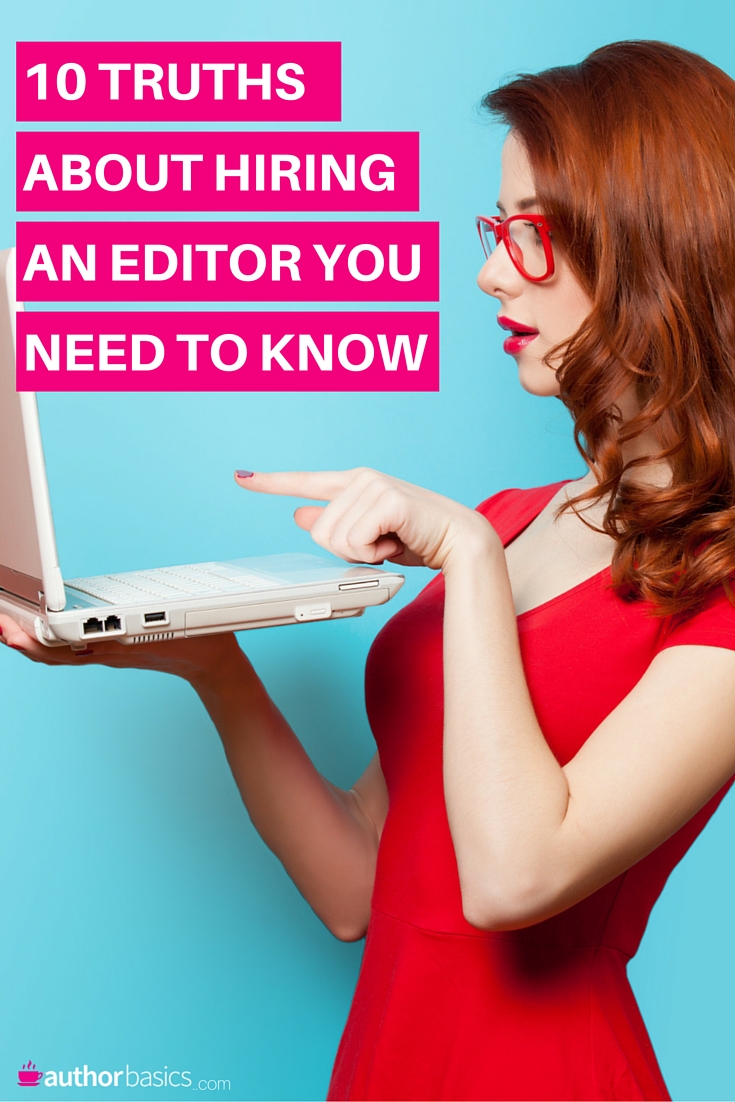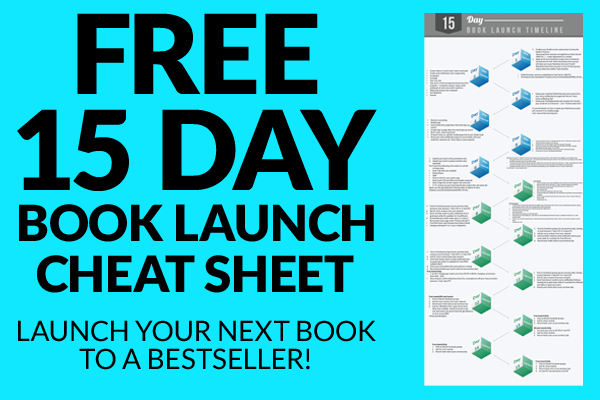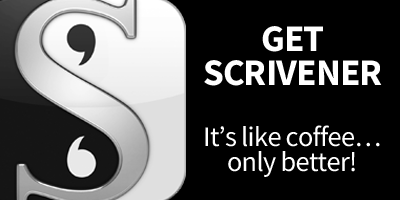We get it. Next to your book cover design, editing seems like one of those unnecessary book-publishing expenses. But take it from us, fail to use an editor and your book sales will suffer.
Truth #1 – It’s not about the cost
Case in point: After the success of my first two books, No Gym Needed, I decided to write another two books focused around my experience as a freelancer and starting a side hustle business.
At the time, I was spending a little too much money on my book production and not seeing a big enough return. So I reasoned, cleverly to myself at the time, that on my Side Hustle Blueprint: How to Make an Extra $1000 per month Writing eBooks project that I could get away with NOT paying for an editor because, after all, I’d already written and published three books. I was a veteran, right?
Anyway, I was already a freelance writer by day, accustomed to self-editing my work, this would be no different. What could go wrong?
Uh, a lot…
Not long after I hit publish and launched the book, I started to receive negative reviews about grammar issues. Not good feedback for an author looking to make a mark and establish a personal brand.
Truth #2 – We’ve all been tempted to skip hiring an editor
If my own story didn’t convince you, on Steve’s first non-fiction book, he read through it so many times and I even proofread—“buddy-edited”—it for him… We figured he didn’t need a professional editor’s eyes on it.
Steve released his Nine Day Novel: Writing Faster book and commenced to get the same feedback I was getting—poor punctuation, grammar, etc. After all, if you’re going to write books about writing, readers expect them to be largely free from grammatical and punctuation errors.
Lessons learned for us both … the hard way.
Truth #3 – It costs more to do it after you’ve published
As soon as each of us realized the magnitude of the mistakes we’d made by self-editing only, we both had our books professionally proofed and copy edited, biting our nails while we waited, hoping that no more bad reviews would hit our Amazon book pages.
Once our more expensive “rush” edit was done, we quickly changed the interior files, and then published the updates.
And while neither of us can remove those negative reviews, they’re now buried by much more positive ones since we had the errors corrected.
Truth #4 – You have to do it to compete
If stories about bad reviews don’t scare you into it, maybe a few stats will:
 There are over 200,000 bestselling ebooks on Amazon
There are over 200,000 bestselling ebooks on Amazon
 Self-Published ebooks account for 55% market share in Author earnings on Amazon
Self-Published ebooks account for 55% market share in Author earnings on Amazon
(Courtesy of http://authorearnings.com/report/may-2015-author-earnings-report/)
What does that mean to you? It means that in order to stand out in such a competitive market, your book needs to be polished.
Not only does your book need great content, it needs to be free from spelling and grammatical errors. Not easy to do if you’re only self-editing…
Truth #5 – This little tool can save you big money
(Direct excerpts from Steve’s Nine Day Novel: Self-editing book.)
Now that we’ve convinced you that you need an editor for every book you publish, if you want to make that process as painless as possible, there are a couple of things you can (and should) do before handing your book over to your editor.
Use your spell-checker.
Start at the very beginning of your draft and just click your way through the entire thing, addressing each and every issue that your spelling and grammar checker finds. You’ll be amazed at how many errors there are.
But that’s what the spell-check function is for, so we’re using it.
Don’t trust your spell-checker.
A word of warning—your spelling and grammar checker lies like a fat dog on a porch!
Scrivener routinely tells me to use the wrong version of “there,” “they’re” and “their.” It also confuses itself with “its” and “it’s.” And from a grammar perspective, anything but an Elizabethan, perfectly-structured sentence gets flagged as a “fragment.”
To combat this, you’ll have to go error by error, click by click, through your entire draft, paying close attention to the specific error, as you change or ignore it, before you simply blindly accept the suggestion and hit “change.”
This usually takes me anywhere from 30-60 minutes, depending on how long my draft is. 90,000 words of fiction is a lot to click through.
Pay attention to your personal typing habits and the common errors that you make.
I routinely, as in all the time, mistype the word “from” as “form.” Typing as fast as I do, my fingers just have a habit of typing it in wrong. But will a spell-checker catch that?
“Form” is a real word, so no, it won’t. I have to have it on my list to find every instance of the word “form” and make sure I’ve used it correctly. Which gets tricky, because sometimes I actually want to use “form” and because I’m subliminally cognizant that I mess it up, I type “from.”
HINT: Create a list of the common errors you make as you type and add that to your self-editing checklist.
Truth #6 – Self-editing can be as simple as reading your draft.
Ah, the dreaded read-throughs…
Do a read-through. Whether out loud or silent, just do it.
Sit down for some comfortable hours and do a marathon read of your draft. (Or read it in the shortest period of time you can.)
The reason I like to do this in only one or two long stretches is that I get a little substantive edit as I go—I can think about and fix some inconsistencies in my story or book, because the beginning will still be fresh in my mind by the time I get to the end.
Sure, you can read it out loud if you want to, but I get so tired doing that, I give up on it pretty quickly and just start reading in my head again. That’s okay. You aren’t the only one who’s going to read your draft.
But read-throughs work
Note to non-fiction writers — you should try to read your book out loud. You’ll quickly pick up sentences that don’t make sense or are difficult to read. Any words you stumble over while reading out loud, will cause your reader to stumble over them as well.
Don’t rush it
Pay particular attention to punctuation and spelling and go slowly. It’ll be hard because your mind knows the story, but read each word individually to catch any errors you might’ve missed.
Truth #7 – It turns out that your non-author friend can help
The Buddy Edit
Get a writing partner. The very next person who’ll see your draft, after you use the spell-checker and do your own read-through, is your writing buddy.
Ideally, they are another writer, but if you can get a fan, friend or “Aunt Millie” to read it, so be it.
Regardless, someone else has to read it.
What we want from our buddy
Set priorities with your buddy editor. If you think you only need a sanity check, say that. If you want some help with your plot points, tell them that, too. Chances are, they’ll come up with a list of suggestions for you on their own, but if you’re struggling in a certain area, make sure you spell that out for them before they do their read-through.
Once you’ve done all the above, you can hand it off to your editor. If you do all of this first, the process will be a lot smoother and it shouldn’t take anywhere near as long for your editor to get done with your book.
Truth #8 – Bad editors are more expensive
Editing can get expensive, but good editing is priceless.
Between Steve and I, we’ve been through about 7 different editors…
There’s nothing worse than getting your book file back from an expensive “editor,” only to have to edit what they supposedly just did!
Finding a good editor that understands your voice, is able to work with the applications you work with, and provides you with comments when they think something just doesn’t make sense, is priceless as far as we’re concerned.
(As a side note, we only work with editors that agree to edit our books directly inside Scrivener)
Truth #9 – Finding a good editor is easier than you think
If you’ve never had to go through the process of hiring someone before, finding an editor, or anyone to help you get your book launched, can seem overwhelming.
Where do you start to look for one? What questions should you ask? How much should you pay them? How do you know they can do what they say they can?
Valid questions that we’ve all had.
There are many options available to you when it comes to finding an editor, these include:
- Fiver.com
- Elance.com
- Upwork.com
- Reedsy.com
- A personal recommendation from another author
But before you log into these website services and hire someone, there are a few details you need to consider.
Truth #10 – There’s a right way to find a good editor
You can find reasonably-priced, as well as good, editors on outsourcing sites like Upwork, Fiverr or Elance.
Here are a few items to consider before going through the process of hiring your editor.
What to put in your advertisement (job description)
Make sure you’re explicit about what you’re looking for in your editor. This means spelling out that you want your draft proofread and also stating what you don’t want them to do.
Include strict timelines around when you need the manuscript back, and if you want the price to include any further edits after you’ve reviewed changes.
What to look for
If you’re sourcing an editor on Fiverr, only work with those who have a high rating and good feedback. Don’t opt to work with a new editor. Yes, the more experienced ones will be more expensive, but this isn’t the time to give someone a shot at editing your book as they learn.
Again, make sure that timelines and requirements are explicitly communicated to them. In most instances, when you purchase the “gig,” they’ll tell you how long it’ll take for the editor to get back to you.
If you need to change that timeline or want something faster, contact the editor before you purchase their gig. You can contact any seller on Fiverr by viewing their profile and then clicking on the “contact me” below their profile image and bio.
In both instances, you also need to make sure that the editor can reach out to you if they need to clarify anything. Either share your Skype details with them or be open to communicating on the platform you’re hiring them through. Direct emails are often not allowed, so keep this in mind as well.
Your personal network
The other option for sourcing an editor is to reach out to your author friends and find out if they can provide you with a recommendation. (Steve and I share all of our favorite freelancers) Check any Facebook groups you belong to or your “friends” on Goodreads. These are both good places to start.
Whatever option you choose, make sure you’re happy with what they’re going to provide. You could get them to do a paid trial, where you give them the first chapter. This will help you see if they’re the editor you’re looking for.
Sample pages
As we mentioned, have some sample pages ready to go—maybe 500 to 1,000 words—that represent your work, so that an editor can work on them and give you an idea of how they would edit your document.
Make this part of the interview process. Have everyone that you shortlist (aim for 2-3 people) edit these sample pages. In most cases, they shouldn’t charge you for this.
This will give you a very quick idea as to whether they understand your voice, and whether they actually catch mistakes you’ve made.
You can purposely put in mistakes to see if they catch them, a little sneaky, but hey, this is your book we’re talking about, you’re not gonna just trust it to anyone!
QUICK TIPS:
Before you hire an editor, you should be clear on:
- Your budget
- The level of editing you want
- Your word count
- Turnaround time
- How busy an editor is
Wherever you find an editor, you’re creating a professional relationship with them that you want to last. Continually evaluate that to make sure that it’s mutually beneficial.
You may need to try a couple of different editors before you find “yours.” Steve and I can both attest to that.
Truth #11 – There are different types of edits
Understanding exactly what you want from an editor ensures that you get what you expect and that your editor understands the scope of the project. There’s no room for ambiguity here.
“Hi Editor, can I have a quote for an edit of my book, please?”
“Hi Author, I can provide you with that, what would you like, a content or a copy edit?”
“Um, what’s the difference?”
Sound familiar?
When Steve and I started out writing, we weren’t overly worried about editors … until we each self-published our first book that is. Then having an editor was key to ensuring that our books didn’t receive 1-star reviews for silly spelling and grammatical errors.
When asked the question, “do you want a content or a copy edit?” both of us scratched our heads, Googling to try and figure out what the heck the difference was…
Content Editing
Now, this is where things can get a little murky. Within a content edit, you could be asked if you want a developmental edit or a substantiative edit.
Honestly, it’s enough to send your head reeling.
Can’t someone just edit my book, already?
We agree. But, you need to make sure that you’re asking for the right type of edit. And maybe you’d benefit from one of these edit types … so bear with us as we explain the difference.
Developmental (Fiction only)
A developmental edit helps you with concept, outlining and story development. We should do most of this before we start writing as part of our outline and story structuring.
A developmental editor can help you figure out what story you’re going to tell, but that type of editing is more expensive.
For us independent self-published authors, developing our story is largely up to us. We make sure we create a story that fits within the Four Part Story Structure (Get the 4PSS Scrivener Starter File) and then write to that outline.
Your writing partner can help you, but you should test your own story’s plot points against the 4PSS as you outline it.
Substantiative
A substantive edit is a deep analytical review that checks for readability, accuracy and consistency. A substantive editor finds inconsistencies in your story/content, characters, or the voice you use for each person/section in your story/content.
It checks to see if your plot/content makes sense. It can also include sentence and paragraph fixes, and major additions or subtractions to your prose or overall niche.
Copy Editing
So, if the above is fairly substantial when it comes to editing, it would stand to reason that a copy edit wouldn’t be as involved.
A copy edit is a simple proofread for grammar and spelling mistakes, and if your editor is familiar with your work, perhaps some feedback on the overall direction of the book.
If you’ve been writing for a long time and your work is well honed, then you could get by with a copy edit plus a buddy edit as well (where your author friend or family member also reads your book).
If you’re just starting out or it’s your first time self-publishing, it might be a good idea to get a content edit.
But be warned, if you’re going for a content edit, be prepared for:
A) a lot of red marks throughout your book
B) questions and queries around the content
C) being prepared to rewrite significant chunks
D) and a much bigger bill when it’s over
Keep in mind that if you’re going down the path of a content edit, the person providing this needs to be familiar with your genre or niche.
From a non-fiction viewpoint, they should be understand your subject matter, almost to the point of being an expert, so that they can provide proper insight and suggestions.
Premium Content:
In this post, we discussed some of the basics behind hiring a professional editor, and why it’s a good idea to plan on doing it. For an in-depth look at exactly how we use Scrivener to shave days off of our editing timeline by requiring our editors to perform their duties directly inside Scrivener, you can:
Read Steve’s book—Nine Day Novel: Self-Editing
And…
Get instant access to the bonus videos for that book




Trackbacks/Pingbacks